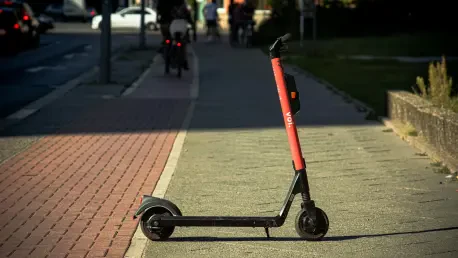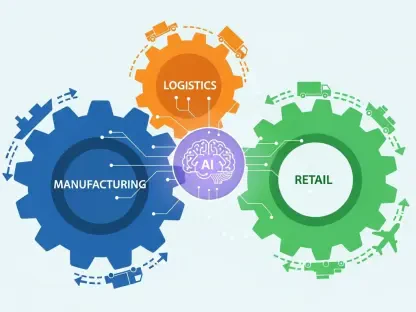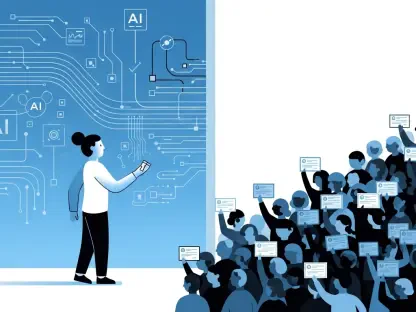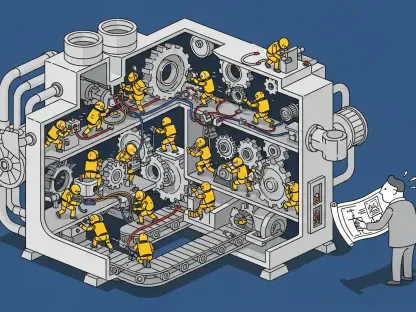Imagine a bustling city where the hum of electric scooters fills the streets, offering a swift solution to the last-mile challenge that plagues urban commuters daily. With millions of trips logged annually, e-scooters have emerged as a cornerstone of micromobility, promising reduced congestion and a greener footprint. Yet, harnessing their full potential requires more than just deployment; it demands a deep understanding of how and why these vehicles are used. This review dives into a groundbreaking technology—e-scooter mobility modeling—that leverages data and machine learning to decode urban travel patterns, paving the way for smarter cities.
Core Features of E-Scooter Mobility Modeling Technology
Harnessing Crowdsourced Data for Precision Insights
At the heart of this technology lies the innovative use of crowdsourced Points of Interest (POI) data, sourced from platforms like Yelp, to map out urban hotspots driving e-scooter usage. By pinpointing locations such as restaurants, bars, and shopping centers, the model reveals a clear correlation between these commercial hubs and trip origins or destinations. This detailed insight allows planners to anticipate demand spikes in specific zones, ensuring resources are allocated efficiently.
Beyond just identifying key locations, the integration of POI data with traffic analysis zones (TAZ) adds a layer of spatial context. This combination paints a vivid picture of how urban layouts influence micromobility, distinguishing high-traffic commercial areas from less frequented leisure spots like parks. Such precision equips cities with the tools to tailor infrastructure improvements to actual user behavior.
Gravity-Inspired Machine Learning for Demand Prediction
A standout feature of this technology is the development of a gravity-inspired machine learning framework, uniquely designed for e-scooter trip forecasting. Drawing on spatial relationships and urban characteristics, the model mimics gravitational pull to predict how distance and amenities affect travel flows. This pioneering approach marks a significant leap as the first tailored solution for micromobility demand analysis.
The predictive power of this framework lies in its ability to process complex datasets, factoring in variables like distance decay, where trip volumes drop as distances increase. By forecasting where and when e-scooters will be in demand, the technology supports dynamic fleet management, ensuring scooters are available where they’re needed most. This adaptability sets it apart from traditional transport models, offering a nuanced lens on short-range travel.
Performance in Real-World Urban Settings
Practical Applications Transforming City Planning
Testing this technology in real-world scenarios, such as in Louisville, Kentucky, showcases its transformative potential for urban environments. The model’s insights have directly informed infrastructure assessments, identifying areas needing dedicated scooter lanes or parking zones based on usage patterns. This data-driven approach helps cities integrate micromobility seamlessly into existing transport networks.
For e-scooter operators, the technology proves equally valuable in optimizing fleet rebalancing strategies. By predicting demand hotspots, companies can redistribute scooters proactively, minimizing downtime and enhancing user access. This practical utility extends to policymaking, where local governments can use the findings to craft regulations that balance safety with accessibility.
Scalability Across Diverse Urban Landscapes
One of the technology’s strengths is its potential for scalability, allowing adaptation to various city profiles beyond the initial test case. Whether applied to sprawling metropolises or compact urban centers, the framework’s reliance on widely available POI data ensures replicability. This versatility positions it as a universal tool for enhancing micromobility integration worldwide, addressing unique local challenges with customized solutions.
Challenges Impacting Effectiveness
Data Integration and Accuracy Hurdles
Despite its promise, the technology faces significant challenges in integrating diverse data sources while maintaining accuracy. Combining crowdsourced POI records with trip data often reveals inconsistencies, requiring robust calibration to ensure reliable outputs. Variations in urban contexts further complicate this, as models must adapt to differing densities and cultural usage patterns without losing precision.
Spatial and Regulatory Constraints
Spatial limitations also pose a barrier, particularly the inherent short-range nature of e-scooter travel, where longer distances deter usage. This constraint limits the technology’s applicability for comprehensive city-wide planning, focusing instead on localized zones. Additionally, regulatory issues, including data privacy concerns tied to crowdsourced information, demand careful navigation to avoid legal pitfalls.
Operational Barriers for Broader Adoption
Operationally, the need for city-specific adaptations adds complexity to widespread implementation. Each urban area requires tailored adjustments to account for unique infrastructure and user demographics, increasing deployment costs and timelines. Overcoming these barriers necessitates collaboration between technologists, planners, and policymakers to align the model with local needs effectively.
Final Thoughts on E-Scooter Mobility Modeling
Reflecting on this technology’s journey, it has carved a notable path in reshaping urban transport by offering a data-driven lens on e-scooter usage. Its blend of POI insights and gravity-inspired predictions delivers actionable clarity for cities and operators alike. Looking ahead, the focus has shifted toward refining data integration techniques to boost accuracy across varied landscapes. Stakeholders are encouraged to invest in partnerships that address privacy and regulatory challenges, ensuring ethical deployment. As cities continue to evolve, scaling this model promises to unlock sustainable micromobility solutions, urging planners to prioritize adaptive frameworks for the road ahead.









